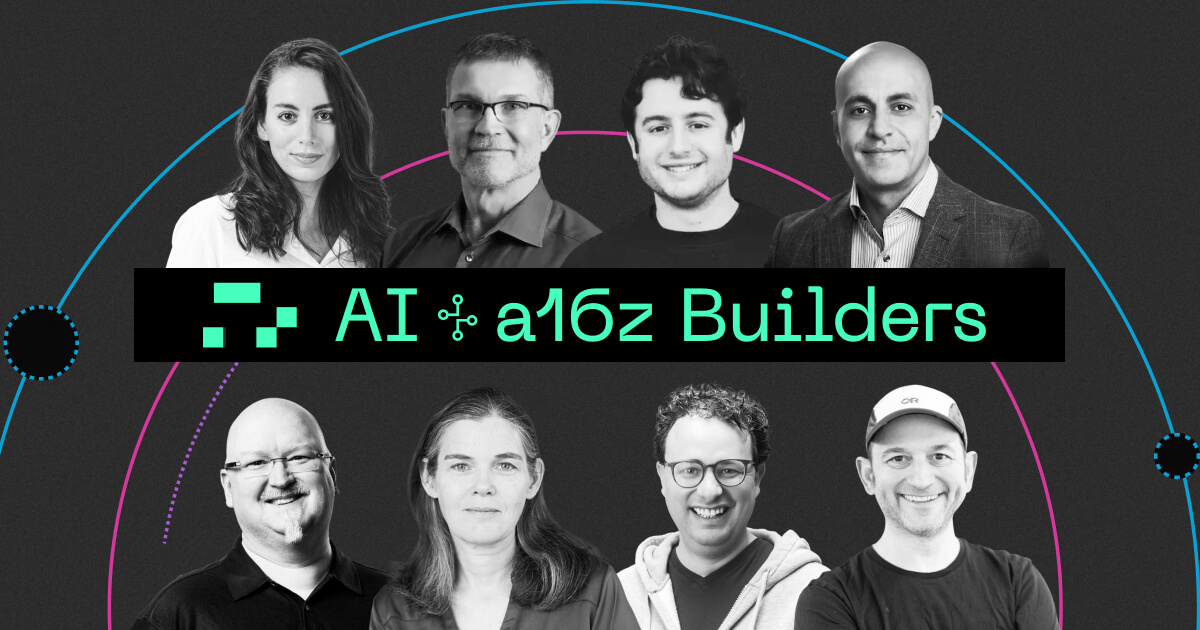
What Builders Talk About When They Talk About AI | Andreessen Horowitz

It will make things way better if you can just dump in massive amounts of information. It should be able to know a billion things about you. The HBM bandwidth is there.
—Noam Shazeer, Character.AI
—Noam Shazeer, Character.AI
Sarah Wang • What Builders Talk About When They Talk About AI | Andreessen Horowitz
I actually disagree with this. I think a bunch of further improvement will come by figuring out better ways to finding important information in databases (instead of just simarlity search) and figuring out how to extract relevant information from conversations, documents, etc. so we can provide only relevant information.
My basic view is that inference will not get that much more expensive. The basic logic of the scaling laws is that if you increase compute by a factor of n, you need to increase data by a factor of the square root of n and the size of the model by a factor of square root of n. That square root basically means that the model itself does not get that... See more
Sarah Wang • What Builders Talk About When They Talk About AI | Andreessen Horowitz
I personally believe when it comes to any creative asset or work automation, the demand is elastic. The more that we make, the more people consume. We’re very much looking forward to a massive expansion in productivity, a lot of new jobs, a lot of new things, just like we saw with the microchip and the internet.
—Martin Casado, a16z
—Martin Casado, a16z
Sarah Wang • What Builders Talk About When They Talk About AI | Andreessen Horowitz
how can you take the knowledge work that someone is doing and use AI to help them be dramatically more productive at doing that particular flavor of cognitive work? In our observation with developers, more than anything else, AI helps keep them in flow state longer than they otherwise would. Rather than hitting a blocker when you’re writing a chunk... See more
Sarah Wang • What Builders Talk About When They Talk About AI | Andreessen Horowitz
Very simply, Jevons Paradox states: if the demand is elastic and the price drops, the demand will more than make up for it. Normally, far more than make up for it. This is absolutely the case of the internet. You get more value and more productivity. I personally believe when it comes to any creative asset or work automation, the demand is elastic.... See more
Sarah Wang • What Builders Talk About When They Talk About AI | Andreessen Horowitz
I think this will be true for AI in general. ChatGPT starts out entering the enterprise, they get accustomed to it, they see the tangible results, and want to try it elsewhere without wanting an exact quantification in cost savings / revenue increases (which is often too hard to do for AI).
If you have to be correct and you’ve got a very long and fat tail of use cases, either you do all of the work technically or you hire people. Often, we hire people. That’s a variable cost. Second, because the tails of the solutions tend to be so long—think something like self-driving where there are so many exceptions that could possibly happen��—the... See more
Sarah Wang • What Builders Talk About When They Talk About AI | Andreessen Horowitz
If you look at every technological shift or platform shift so far, it’s resulted in more things to design. You got the printing press, and then you have to figure out what you put on a page. More recently, mobile. You would think, “Okay. Less pixels, less designers.” But no, that’s when we saw the biggest explosion of designers.
—Dylan Field, Figma
—Dylan Field, Figma
Sarah Wang • What Builders Talk About When They Talk About AI | Andreessen Horowitz
Dylan Field on why AI will not mean less jobs
a lot of the focus today is on the development of foundational large language models (LLMs), the transformer architecture was invented only 6 years ago, and ChatGPT was released less than a year ago. It will likely take years, or even decades, before we have a full tech stack for generative AI and LLMs and a host of transformative... See more
Sarah Wang • What Builders Talk About When They Talk About AI | Andreessen Horowitz
When folks in these communities have access to very powerful tools, they tend to do remarkable things that create economic opportunities for themselves, their families, and their communities. They solve problems that you or I are not going to solve just because we don’t see the whole problem landscape of the world. We don’t have their point of... See more